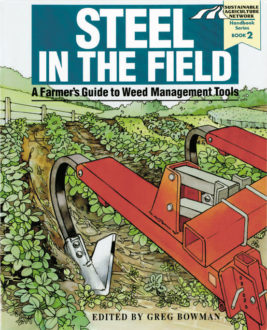Agronomic Row Crops
Hoes and Harrows to the Rescue
Flex-tine weeders, spike-tooth harrows and rotary hoes can be set so that they perform shallow tillage weeding about the same as each other in non-crusted soils. But in heavily crusted soil, flex-tines may not penetrate at all and the harrows can dislodge then push soil chunks with weeds intact, damaging shallow-rooted crops.
In North Dakota, research with 20 crops showed the rotary hoe and a light spike-tooth had about the same impact on crops. Use was preemergence at crop-specific times then again at about two weeks after planting.
Both tools work preemergence in small grains until shoots (coleoptiles) reach the tillage zone depth of 0.5" to 1". They can be used postemergence after grains show their first true leaf through the 3-leaf stage. Later use will inflict yield-reducing stress on the crop. Postemergent use is not recommended for amaranth, canola, crambe, mustard and oats. Stand reduction occurs in buckwheat, flax, lentils and proso millet. Stand reduction is possible in safflower.
In general, a one-pass mechanical treatment followed by weed scouting and a species-specific, reduced-rate herbicide can provide suitable weed management at the same or lower cost as herbicides alone, according to agronomist Greg Enders of NDSU. For a 1997 chart listing mechanical weed control recommendations for 21 crops, write 'Harrow List,' NDSU/Carrington Research Extension Center, Box 219, Carrington ND 58421, fax (701) 652-2055.
